St Giles' Home for Boys, Wrexham, Denbighshire, Wales
St Giles' Home for Boys was opened by the Waifs and Strays Society in 1902 at 23 Chester Street, Wrexham. The property had been acquired after the Society had received the sum of £500 from a charitable trust set up under the will of Welsh railway engineer, Benjamin Piercy. The home was officially opened on December 16th, 1902, by Lady Penrhyn, with the Bishop of St Asaph conducting a service of dedication. The home could accommodate 20 boys aged 7 to 10 years.
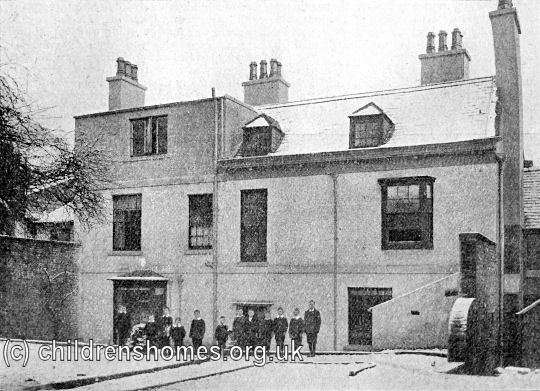
St Giles' Home for Boys, Wrexham, c.1906. © Peter Higginbotham
On 30th March, 1904, the home was accredited as a Certified School and could receive boys boarded out by the workhouse authorities.
The boys at St Giles' clearly liked to dress up for occasions such as an Easter Monday entertainment in 1908.
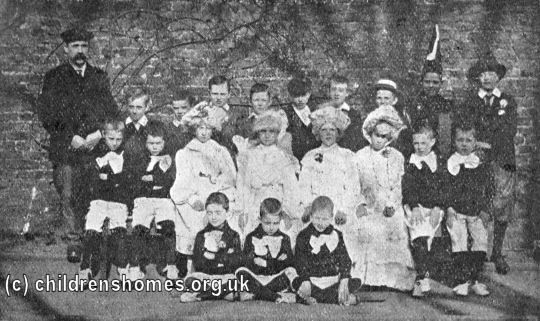
Easter Monday Entertainment at St Giles' Home for Boys, Wrexham, c.1908. © Peter Higginbotham
In 1913, plans were made to build a larger house to replace the existing St Giles' premises. A site was found on Rhosnesni (or Rhosnessney) Lane, Wrexham, and the foundation stone for the new building was laid by Lady Harlech on November 28th of the same year. The home came into use at the end of 1914 and was formally opened on June 4th, 1915, with Archdeacon Fletcher performing the dedication. The new premises housed up to 36 boys aged 7 to 14.
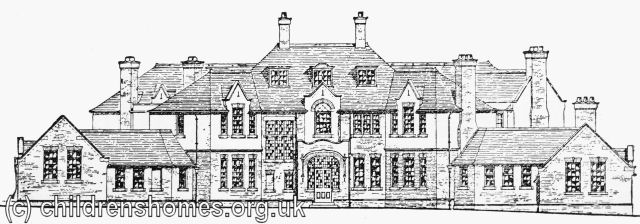
Architect's design for new St Giles' Home for Boys, Wrexham, c.1913. © Peter Higginbotham
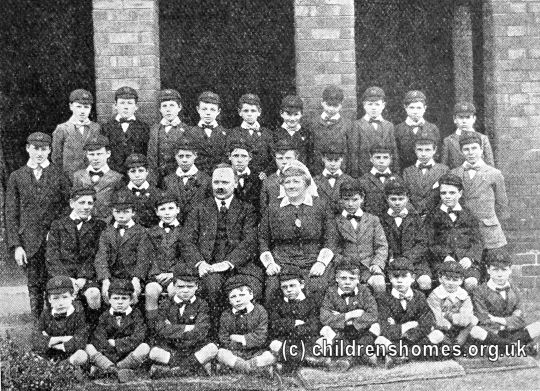
St Giles' Home for Boys, Wrexham, c.1923. © Peter Higginbotham
The Society's homes often kept pets for the children's interest and enjoyment. The boys at St Giles' were a little unusual, though, in keeping pet jackdaws.
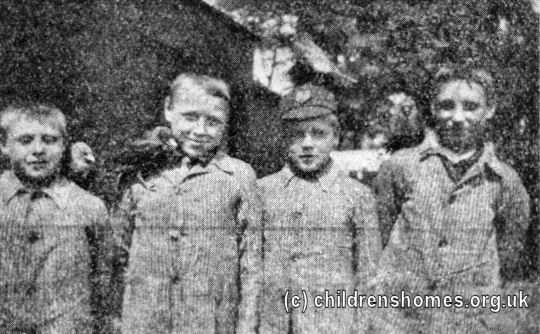
St Giles' Home for Boys, Wrexham, c.1927. © Peter Higginbotham
The annual Christmas nativity play also provided an opportunity to get togged up.
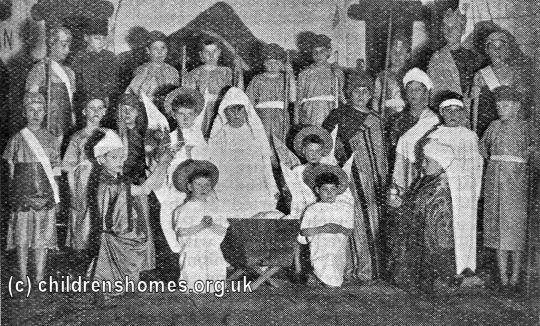
St Giles' Home for Boys Nativity play, Wrexham, c.1930. © Peter Higginbotham
The boys' home closed on March 14th, 1941, with most of the residents relocating to the St Boniface's Home at Sampford Peverell. Three weeks later, the home was re-opened as a war nursery.
After the war, the home reverted to providing care for older children.
St Giles' continued in operation until the 1980s.
Former St Giles' Home, Rhosnesni Lane, Wrexham.
The Chester Street premises were used during the First World War to house Belgian refugees. From the 1920s until 1978, the building housed the local Register Office. In more recent times, it has been occupied by a firm of solicitors. The Rhosnesni Lane property is believed to now be in private residential use.
Records
Note: many repositories impose a closure period of up to 100 years for records identifying individuals. Before travelling a long distance, always check that the records you want to consult will be available.
- Index of the Society's first 30,000 children's case files ordered by surname.
- Index of the Society's first 30,000 children's case files ordered by date of birth.
- The Children's Society Records and Archive Centre is at Unit 25, Springfield House, 5 Tyssen Street, London E8 2LZ (email: archives@childrenssociety.org.uk). Files for children admitted to its homes after September 1926 were microfilmed in the 1980s and the originals destroyed. Some post-1926 files had already been damaged or destroyed during a flood. The Society's Post-Adoption and Care Service provides access to records, information, advice, birth record counselling, tracing and intermediary service for people who were in care or adopted through the Society.
- The Society has produced detailed catalogues of its records relating to disabled children, and of records relating to the Children's Union (a fundraising body mostly supported from the contributions of children).
Bibliography
- Bowder, Bill Children First: a photo-history of England's children in need (1980, Mowbray)
- Church of England Waifs and Strays' Society [Rudolfe, Edward de Montjoie] The First Forty Years: a chronicle of the Church of England Waifs and Strays' Society 1881-1920 (1922, Church of England Waifs and Strays' Society / S.P.C.K.)
- Higginbotham, Peter Children's Homes: A History of Institutional Care for Britain's Young (2017, Pen & Sword)
- Morris, Lester The Violets Are Mine: Tales of an Unwanted Orphan (2011, Xlibris Corporation) — memoir of a boy growing up in several of the Society's homes (Princes Risborough, Ashdon, Hunstanton, Leicester) in the 1940s and 50s.
- Rudolf, Mildred de Montjoie Everybody's Children: the story of the Church of England Children's Society 1921-1948 (1950, OUP)
- Stroud, John Thirteen Penny Stamps: the story of the Church of England Children's Society (Waifs and Strays) from 1881 to the 1970s (1971, Hodder and Stoughton)
Links
- Hidden Lives Revealed — the story of the children who were in the care of The Children's Society in late Victorian and early 20th Century Britain.
- The Children's Society
Except where indicated, this page () © Peter Higginbotham. Contents may not be reproduced without permission.


